Basa fish is a river Catfish and one of 28 species in the Pangasiidae family. This fish is really tasty and full of nutritional properties, so you shouldn’t miss this post…

This fish is a large shark catfish species that is native to the Mekong and Chao Phraya basins in Indochina and Southeast Asia.The term ‘pangasius’ is used commercially and it refers to what is colloquially known as basa, tra, or swai, a popular table fish.
In comparison to its cousin – Pangasius Hypophthalmus (stripped catfish) – Basa are more difficult to farm, more costly to breed and slower to grow. Consequently – Basa commands at higher price. Let’s learn now about this interesting fish.
Table Of Content
Taxonomy
Scientific name: Pangasius bocourti. Animalia Kingdom. Phylum: Chordata. Class: Actinopterygii. Order: Siluriformes. Family: Pangasiidae. Genus: Pangasius. Species (s): P. bocourti.
Basa Fish Main Characteristics:
This fish is characterized by having a very wide mouth, as well as a long and double beard very similar to that of the tiger fish or Goliath.
The surface of the head is opaque, and it has an obtusely rounded snout. The upper jaw is longer than the lower jaw, and has two pairs of chins.
The spine is serrated in its anterior part; the pectoral spine is stronger compared to the dorsal, and serrated on the inside; while the caudal fin is deeply forked.
The bass fish usually lives in fresh water, but it can also tolerate brackish water with a salt concentration between 0.7% to 1%; as well as alumina water with a pH greater than 5
 The pangasius or basa fish has more red blood cells, than any other fish, and if that were not enough, it has an additional respiratory organ, which means that this fish is able to breathe through bubbles, and thanks to the properties of their skin, basa fish can tolerate an environment with very little oxygen.
The pangasius or basa fish has more red blood cells, than any other fish, and if that were not enough, it has an additional respiratory organ, which means that this fish is able to breathe through bubbles, and thanks to the properties of their skin, basa fish can tolerate an environment with very little oxygen.
Moreover, basa fish grow and develop very quickly, and when they are babies they can reach a size of ten to twelve centimeters, and weigh just fifteen grams; but when they reach two and a half kilograms of weight, they begin to grow faster.
When Bocourti Catfish (as they are known in Canada) are ten years old, they stop growing, but not getting fat. We invite you to read our article the anatomy of fish to learn about this interesting topic
Basa Fish Size and weight
When basa fish develops in their natural habitat, they can live up to twenty years, reaching a size of up to one meter eighty, and eighteen kilograms in weight. But in the culture ponds, at the age of ten, these fish can already weigh twenty-five kilograms easily.
Let’s watch how they catch them
The Basa Fish Properties
This species has huge nutritional properties since basa fish have a low to moderate fat content with high levels of protein.
The amount and composition of fat content will be influenced by the feed used in aquaculture operations.
The nutrition label is usually provided for a four-ounce raw serving. It’s good to take into account that the real nutrient content of will be affected by the added ingredients and the cooking method used.
Demand for these fish is driving an expansion of agricultural operations in other nations such as China, Cambodia, Laos and Thailand. All species that are raised in these countries are Asian catfish.
The confusion about the variety of different catfish species produced in many different countries has created problems for buyers trying to distinguish product attributes and price.
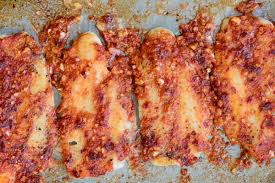 The nomenclature is complicated by similar names for different species of fish and due to the production of the same species of fish in different places.
The nomenclature is complicated by similar names for different species of fish and due to the production of the same species of fish in different places.
The basa fish is available in the same ways as most teleosteous fish.
The most popular way is boneless fillets, without skin or portions in different sizes and cut shapes of fillets.
The basa fillets can vary in size up to 6-8 ounces. Most products are shipped to the US frozen and available as a frozen or thawed item and sold as a pre-frozen refrigerated product.
Market demand and prices of associated products for different Pangasius species reflect consumer preferences.
White Basa is Pangasius’ favorite imported variety due to a mild to sweet taste, a whiter flesh color and somewhat cooked fresh texture.
In contrast, Swai or Tra fish may appear whitish to beige and the fillets are thinner with a thicker texture.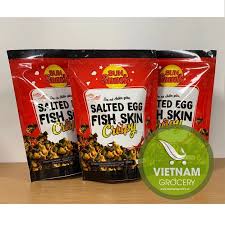
The characteristics of the cultivated United States farm seems to fall somewhere between the two Pangasius selections.
Consumers’ preferences are usually influenced by the price or the prescriptions provided, but there is nutritional information based on the fillet that can be considered as their main quality and which will be described in detail later.
The market’s preference for basa fish has increased prices above that of similar parts of Swai or Tra.
The more resistant Swai or Tra, grow rapidly and can produce products of the market size in less than ten months which is another factor that makes this species more economical.
The illegal substitution of Pangasius for more valuable fish such as grouper in the United States has been documented. The base fish must be identified both by the correct market name and by the country of origin.
Impact on society
The continued global demand for seafood products will require more aquaculture production. The 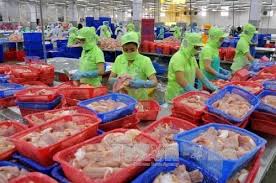 rapid growth in popularity of Pangasius in the United States is an excellent example of this trend.
rapid growth in popularity of Pangasius in the United States is an excellent example of this trend.
Several organizations, (regional and national authorities and third parties) have focused on measures to ensure sustainability.
Producers, buyers, international organizations and national authorities are moving forward and demanding the use of best aquaculture practices to minimize the impact on local environments and communities.
It’s likely that basa fish production will continue to increase with numerous measures to ensure responsible and sustainable practices.
Market attempts to distinguish product sources have led to advertising claims about food safety issues related to mercury contamination or the use of antibiotics in these products.
Although some of these concerns may have been partially true in previous and limited situations, both producers and governments have responded to these claims by imposing additional food safety controls and specific product monitoring procedures.
Let’s watch and learn
Nutritional value
Basa Fish is a healthy option for people, and in particular for families that pay special attention to a healthy diet.
Despite the myths and legends that may have been generated about this precious fish, many people know how to appreciate its properties, and for this it’s very useful to know its nutritional value.
Source of omega three
Consuming basa fish on our daily diet causes triglyceride and cholesterol levels to decrease, and 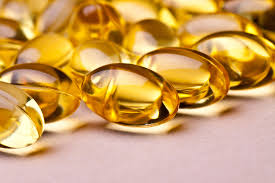 also prevents the formation of clots in the arteries.
also prevents the formation of clots in the arteries.
Many testimonies have indicated that their constant consumption has lowered blood pressure, in people who suffer mild or moderate hypertension; since this fluidizes the blood, so the body is protected from heart attacks, strokes, strokes, chest diseases, among others.
In addition its continuous consumption protects the body against cancer of the colon, breast, and prostate, and has an anti-inflammatory function that relieves pain in some diseases such as arthritis.
Benefits for the Heart
This fish, through omega three, has the property of increasing the electrical transmissions of the heart, so it regulates the heart rhythm, preventing coronary heart disease.
High in protein
The proteins present in basa fish help to form and repair skin tissues, as well as muscles, organs, hair, nails and bones. By including basa fish on our daily diet, all the cells of our body begin to function properly; besides it helps to generate antibodies, and therefore to strengthen the immune system.
 By regularly eating basa fish we are not only guaranteeing good health, but we are also preventing the spread of infections and diseases.
By regularly eating basa fish we are not only guaranteeing good health, but we are also preventing the spread of infections and diseases.
In addition, this food facilitates a good digestion of any other food we eat, being a great contribution of energy for our body.
Another benefit of eating basa steaks on our daily diet is that it helps maintain blood sugar levels, thus preventing the onset of associated diseases such as diabetes.
Basa Fish Reproduction
In Vietnam, where these fish originate, specifically in the lower section of the Mekong River, the mating season begins during the fifth or sixth month of the lunar year.
At this point, the basa fish swim upstream to the crossing of the Mekon River and the Tonlesap Kratie River in Cambodia, to the Khone waterfall on the border between Cambodia and Laos, where they reproduce.
The spawned eggs adhere to the roots of the trees that grow along these rivers, and after twenty-four hours of spawning, the fry begin to grow, drifting down the river.
Long before the Vietnamese were perfected in the artificial fish farming system, they raised pangasius fish on floating cages, after they caught their fry in the river.
From the year 1995, after the success they had with artificial farming, the supply of small fish has increased significantly, and the breeding of this fish has brought many Vietnamese people out of extreme poverty.
At the end of the 20th century, the An Giang and Polla Thap provinces were considered central areas for basa fish cultures, with a large number of cages floating along the Mekong River.
But since 2004, the most optimal agricultural areas have moved to the provinces Ben Tre, Tien Giang, and Vinh Largo.
This is because these provinces have more favorable ecological conditions; For example, they are located in the lower part of the Mekong, near the mouth of the river, where there are many large and small islands, which are far from residential areas.
In addition, it has natural movements of tides twice a day, which greatly favors the breeding of fish in this area.
 A very important aspect is that they have managed to control agriculture in these areas, in order to avoid the expansion and contamination of the environment.
A very important aspect is that they have managed to control agriculture in these areas, in order to avoid the expansion and contamination of the environment.
For this reason, the cultivation areas must be located far from the residential areas, so each farm must submit a report on its environmental influences each time its agricultural operations begin.
Thanks to these controls, and the natural advantages mentioned above( In addition to the techniques used in the cultivation), the basa fish that are raised on this site are of a very high quality.
Bassa Fish’ Habitat
These fish can be found both in fresh water, as in brackish water, with their most common habitats being large rivers, flooding of the plains, estuaries, canals, and usually can be obtained at the mouths of rivers, inlets, marshes , and streams.
Although their place of origin is in the Asian continent, basa fishare imported to different parts of the world, where they have been grown as an endemic species.
Geographical Distribution
They were previously abundant in the Ganges and Brahmaputra rivers, but serious declines have been reported; although there is no empirical evidence to support this decline for this species in its entirety.
However, localized catch data suggest that this species is being a victim of overfishing, and for this reason its status is decreasing.
Let’s watch
Https://www.youtube.com/watch?v=gQ3gTygmz7I
Myths and True Facts about Basa Fish
This fish has caused a lot of controversy worldwide, not only because of its low cost, (which has no comparison with any other), but also because of the bad reputation publicized by those who see their profits in danger, by the competition that this represents in terms of nutritional value and cost.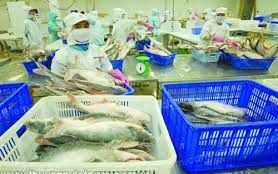
As it’s naturally cultivated on the Mekong River in Vietnam, which is considered one of the most polluted in the world, they have been given the task of discrediting basa fish by making people believe that their meat is harmful to health, because it has eating habits different from other fish.
One of the main myths that have been disseminated about basa fish is that it causes the effect of mad cows disease. This is because the pangasius are fed dead fish, prepared flours and powdered bones; but there is still no documented record of any person or animal that has been affected by them.
 Some farmers in charge of raising the fish argue that this is an omnivorous fish, and that they feed them with soybeans, and other cereals, as well as fish that they can hunt in their natural habitat, so there is nothing to Fear when consuming its meat.
Some farmers in charge of raising the fish argue that this is an omnivorous fish, and that they feed them with soybeans, and other cereals, as well as fish that they can hunt in their natural habitat, so there is nothing to Fear when consuming its meat.
Another of the myths is that basa fish is cheaper, because it’s not nutritious. Certainly this fish is much cheaper than any other, because it doesn’t require large investments, or special spaces for breeding and farming.
However, it has also been proven, (as we have seen previously), that the basa fish has a great nutritional value.
In this sense, the basa fish has less fatty acids than other fish for human consumption, and many more proteins and minerals, substances that are considered beneficial for the body.
Interesting Considerations about Basa Fish
If you are in doubt or are worried about consuming the red basa, you may want to know the following: The fillet coloring may be a good indication of its quality: if it’s white, the species has been grown under conditions that can be considered as optimal.
If the fish has a yellow or red color, it can mean two things: the fish has grown in low oxygen conditions or a poor slaughter technique has been used, respectively.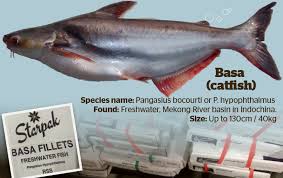
In no case, according to the SANCD (Institution of South Asia for chronic diseases), does the color modify the nutritional quality of this food.
According to Spanish legislation, only specimens of Pangasius hypophthalmus can be labeled as panga, so we must pay attention to characteristics such as their hue or thickness.
There are merchants and industries who are interested in preventing the consumption of this wonderful fish, and they are the same who argue that this fish is contaminated, and that its consumption is not safe for humans.
The truth is that this fish has undergone studies conducted by authorized entities, which have reported low levels of mercury in their meat, that is, that their meat is still safe for daily consumption; and although it’s intended to say that those who consume it can be infected with  cholera, “good cooking is enough to avoid any danger.”
cholera, “good cooking is enough to avoid any danger.”
Another of the famous myths that circulate around the basa fish, is that it has a high hormonal level.
This is due to the way of cultivation with which aquaculturists treat pangasius fish, with scientific and technological methods.
However, there is no evidence that females are stimulated with hormones in the cages so that they are much more productive, nor is there evidence that the meat of a beef fillet has such substances present.
This is due to a publicity scheme, so that people who are easy to suggest, stop acquiring this product that is much cheaper in their pocket, to continue buying the fish they are used to, and to which they increasingly raise their cost, not having any competition.
So this type of people stops consuming a product of very good quality, which they can even buy at a lower price, than those who are already accustomed to take home, because they are left to suggest, and they don’t give themselves the opportunity to try the product and Get their own conclusions.
Let’s keep enjoying about basa fish
The Basa Fish Nowadays
There are many countries that have begun the cultivation of this fish, because they haven’t paid attention to the malicious comments of the biggest fishing emporiums and have given the  opportunity to the basa fish not only because it’s much cheaper to raise and reproduce it, but also because they have noticed its undeniable and unmatched nutritional value.
opportunity to the basa fish not only because it’s much cheaper to raise and reproduce it, but also because they have noticed its undeniable and unmatched nutritional value.
But unfortunately, some countries like Colombia have also been influenced and despite not being a rich country, it does not give its people the opportunity to benefit from quality fish.
Moreover, since they have realized that they are an easy town to coerce, the discrediting campaign of the fish has been aggressive in this country, so much so that when noticing the presence of the basa fish, almost a national emergency has been declared.
Final Consideration
From this space we want to take the opportunity to highlight that animals are all God’s creation, and are set and ready for man to feed on them, because otherwise they wouldn’t be in our food chain.
Just as a book shouldn’t be judged by its cover, a fish shouldn’t be discarded because of the comments that other people make, let alone if there is no reliable evidence of it.
Only with the presence of omega 3, it’s a guarantee that it can be consumed without any risk. In addition to this fish is much cheaper than other fish that are also very healthy, but that being so expensive, are not available to many people.
Don’t let anyone tell you what you can or cannot eat, don’t let yourself be influenced by anyone, and dare to try the basa fish, so that you can draw your own conclusions. This way you will realize, that many times we get carried away by malicious comments, and we miss many benefits that are at our fingertips.
Let’s learn more about the basa fish’ native country
Https://www.youtube.com/watch?v=3M0TmN2TsK4
Basa Fish Recipes
Let’s learn how to cook this very tasty and nutritious fish
Roasted Basa fillets with lemon
Ingredients (5 portions)
√ 1kg basa fillet (fish)
√ 2 tablespoons lemon juice
√ Salt to taste
√ 1/4 cup finely chopped coriander
√ Olive oil to taste
√ 1/4 cup wheat flour
√ Ground pepper to taste
Steps (15 minutes)
We bathe our steaks with lemon juice, ground coriander, ground pepper and salt to taste. Then we add wheat flour We heat the pan well with olive oil to taste. Then we place our steaks for 2 min and so our delicious steaks are ready to taste. We can accompany them with a lettuce salad
Basa Fish Overflowed with Vegetables
This recipe can be for a formal or informal dinner, you can accompany a pink wine or a white wine
Ingredients (1 serving)
√ 200 grs White Basa Fillet
√ 020 grs Carrot
√ 20 grs Pumpkin
√ 020 grs green beans
√ A few Coriander Twigs
√ 050 grs Rice
√ 030 grs Pea with Carrot
√ 005 ml Olive Oil
√ 003 grs Ground Pepper
√ 003 grs Salt
√ 005 grs Butter
Steps
√ The rice is cooked and the vegetables are chopped in sticks.
√ Once the vegetables are chopped, they are cooked a little, so that they are al dente.
√ Olive oil is tossed in a pan and the fish fillet is fried, once fried it must be removed and mounted on a large plate
√ The vegetables al dente are thrown in a pan with a little butter as well as the coriander sprigs, once stewed; they are mounted to the fish and accompanied with the rice with pea and carrot.
Let’s learn another one
